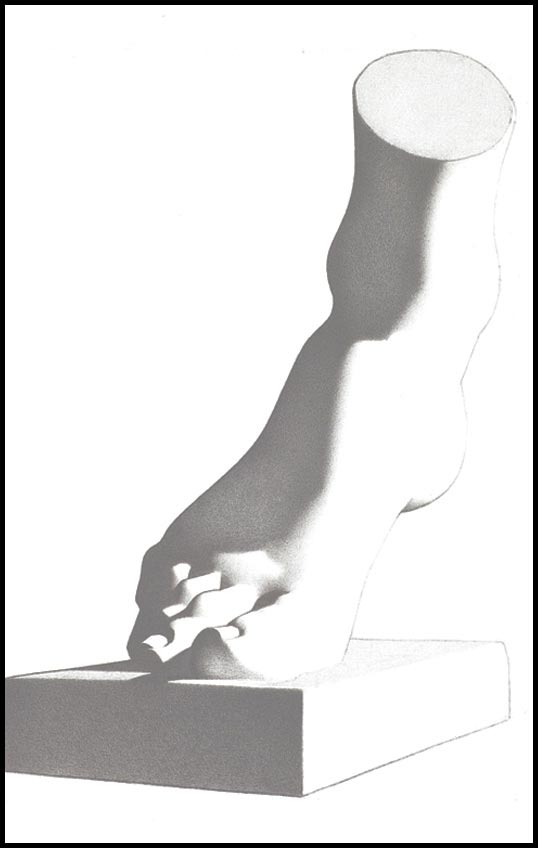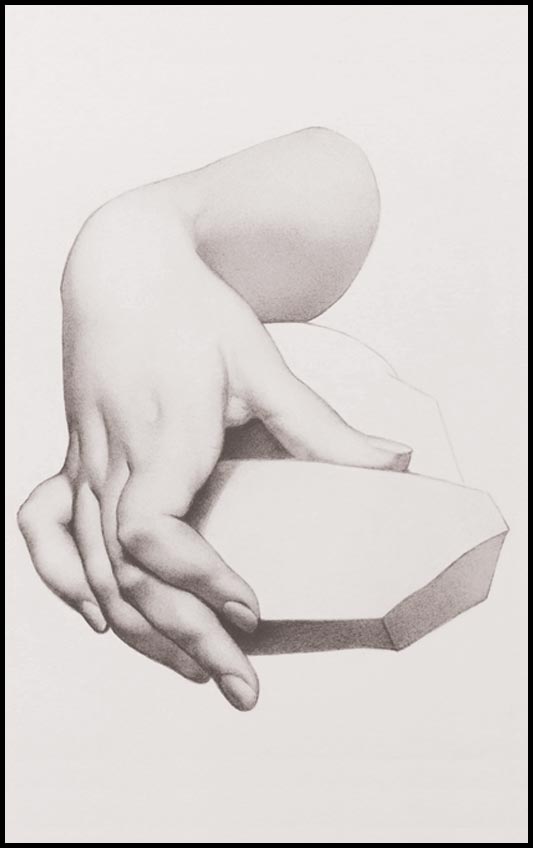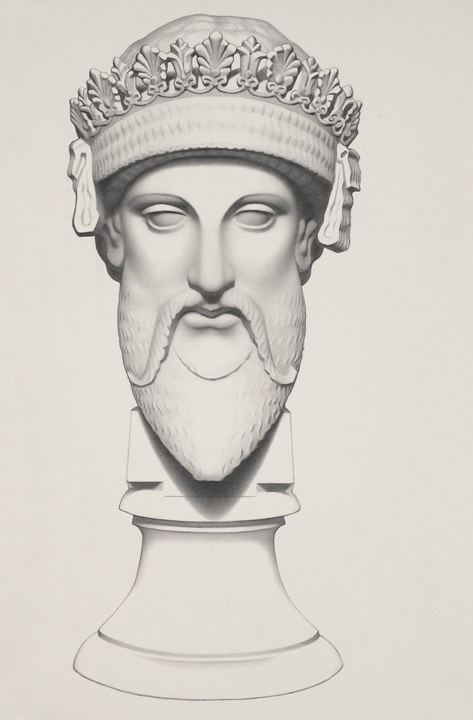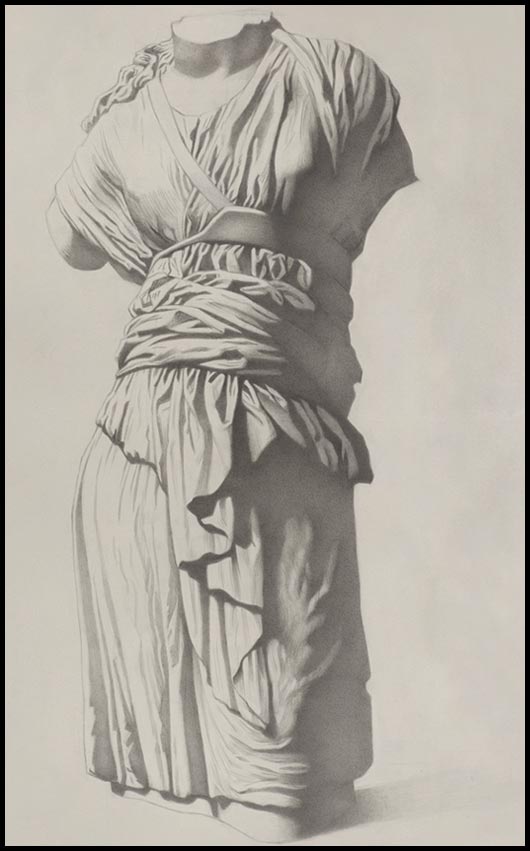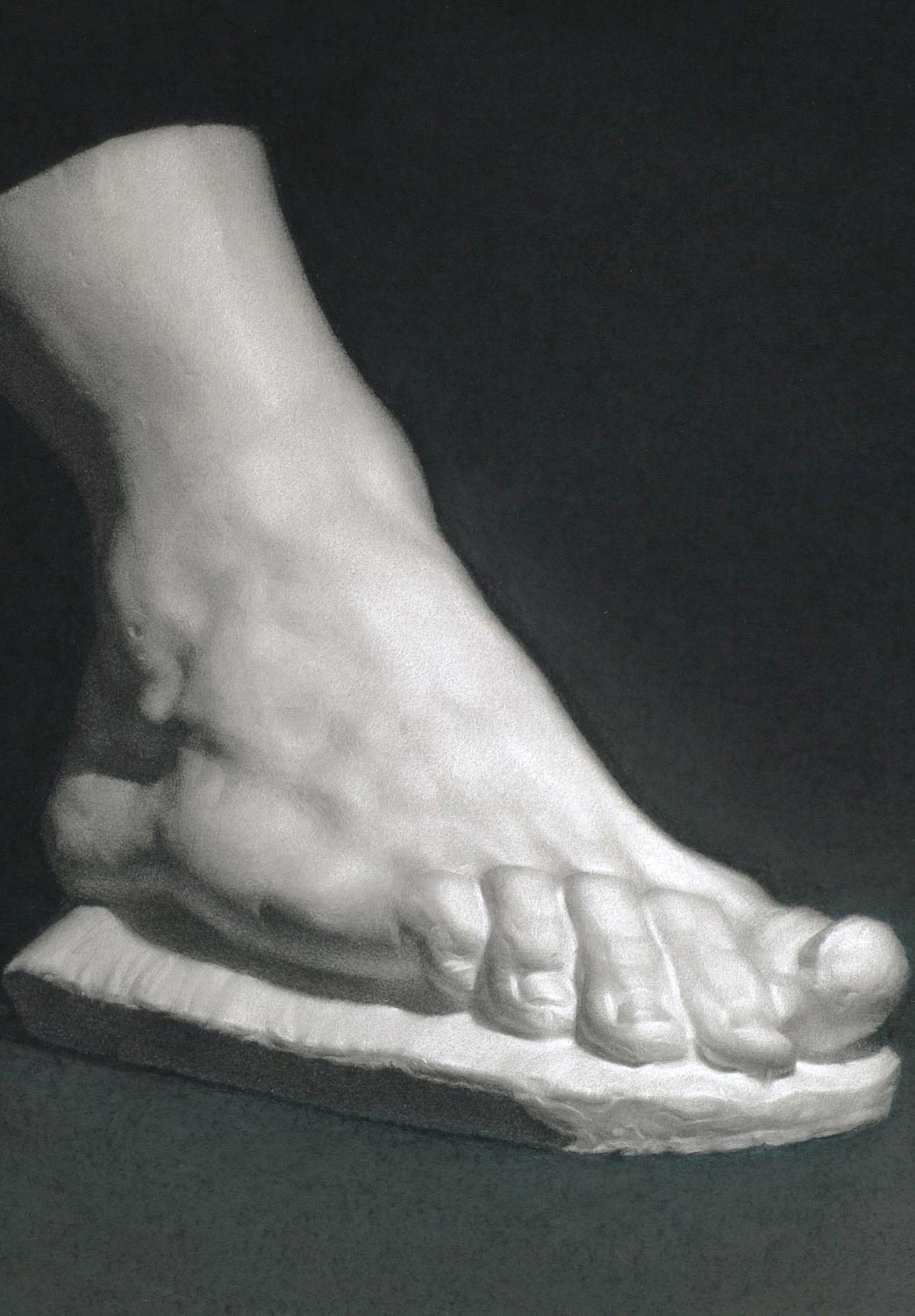Certificate Program in Drawing
Students begin their Academic training by making detailed, accurate copies of Bargue lithographs. These lithographs have been carefully designed to teach serious art students the foundations of all Classical drawing. The foundations are: articulating accurate shapes, creating volume, rendering details, and bringing each piece to a complete finish. These exercises are done in graphite, which is the most easily-controlled drawing medium. Mastercopies encourage longer engagement with the Master artist’s decisions and techniques than the simple act of observing a finished work. Students must complete 4 Mastercopies; 3 in pencil and 1 in charcoal. Assignments then move on to Charcoal Cast drawings, which takes the student from “drawing from the flat” to “drawing from the round”, thus developing the student’s ability to draw from reality.
A student must complete 9 out of 11 assignments.
Bargue 1
Bargue 2
Bargue 3
Bargue 4
The first entry-level Bargue drawing introduces students to the three fundamentals that are the basis of all future drawings: reliable measuring, identifying the lights and shadows that make up the form, and controlling dark values.
The second Bargue drawing incorporates the use of a light and shadow pattern, and the introduction of gradations of tone in the lights. This exercise teaches the student to model the volume of the whole form, and to describe simple smaller forms within the context of the big form.
Progressing from the second Bargue, the third exercise concentrates on establishing a hierarchy of values in which smaller forms are included but subordinated to the larger form, and each detail is placed in a logical context.
Bargue 4 moves away from using a one-to-one ratio, to using comparative measurement for a scaled-up drawing. This assignment expands and perfects the student’s ability to model fully the big form and to depict details in both the lights and the shadows.
Line Drawing Mastercopy
Pencil Mastercopy 1
Pencil Mastercopy 2
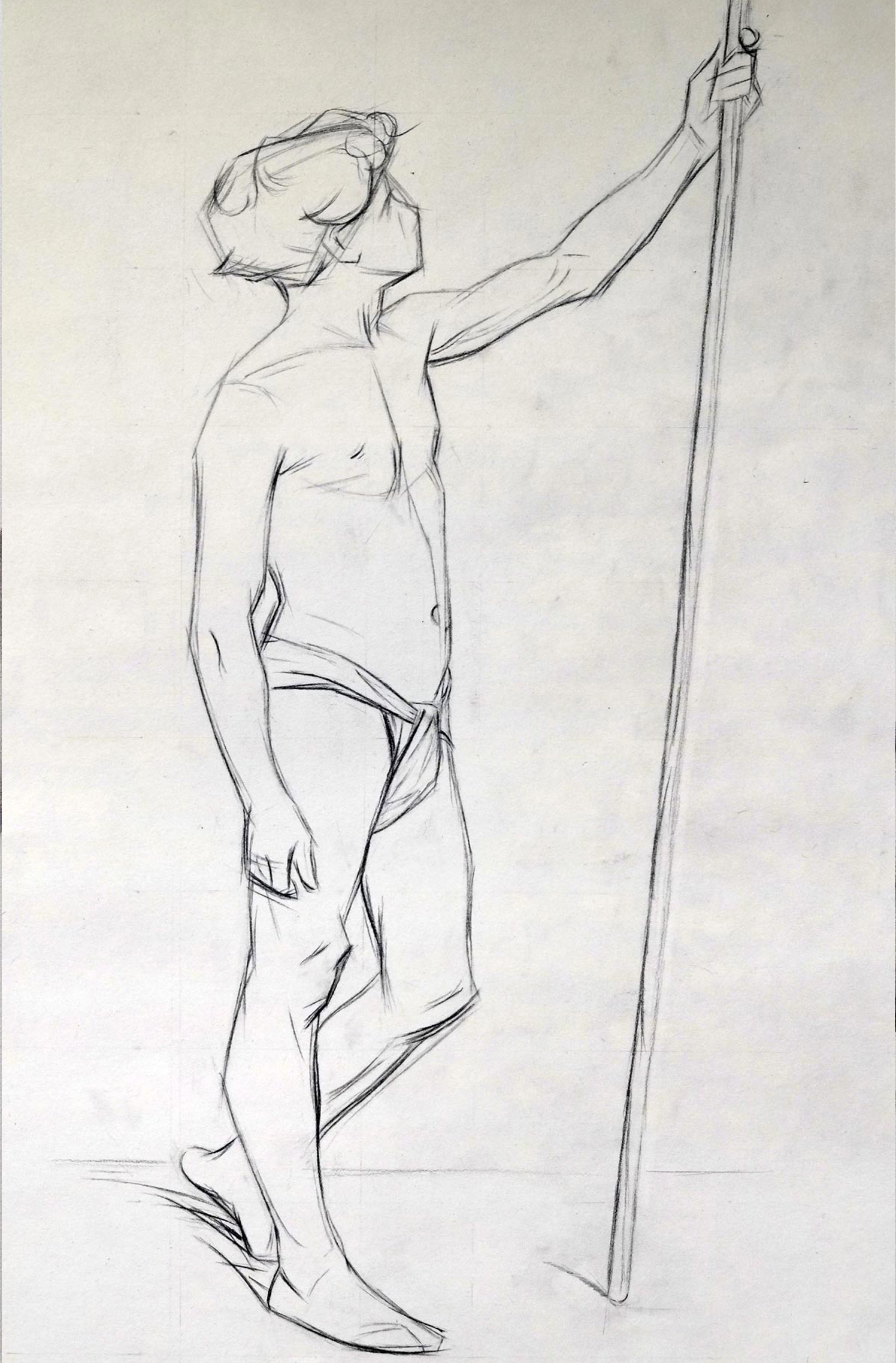
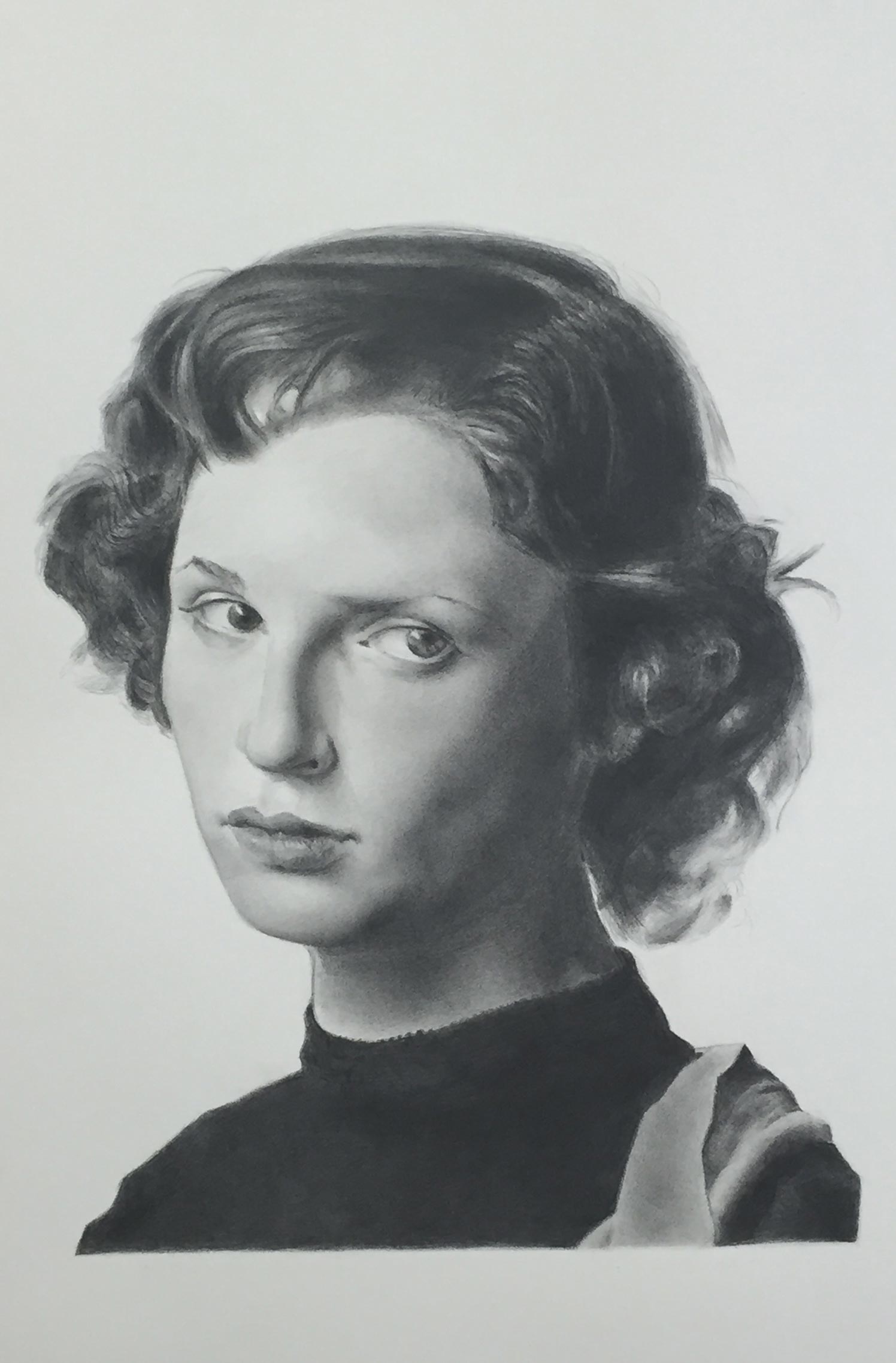

Working from Bargue line drawings and using comparative measurement, this assignment brings together all the elements of figure drawing: capturing the model’s gesture, distilling the form into its component parts, measuring for accurate proportions, and developing expressive line quality.
Working from a selection of 19th Century Master drawings, students may choose a portrait or a figure drawing for their first pencil Mastercopy. Skills learned from Bargue drawings are put into practice here, in preparation for producing a fully finished drawing from life.
This assignment required comparative measurement to scale up the subject. The original is more complex, and more gestureful, unusual or expressive than a student would encounter in a life class. Like the first Mastercopy, this is done in pencil on a neutral background.
Charcoal Mastercopy
Charcoal Cast 1
Charcoal Cast 2
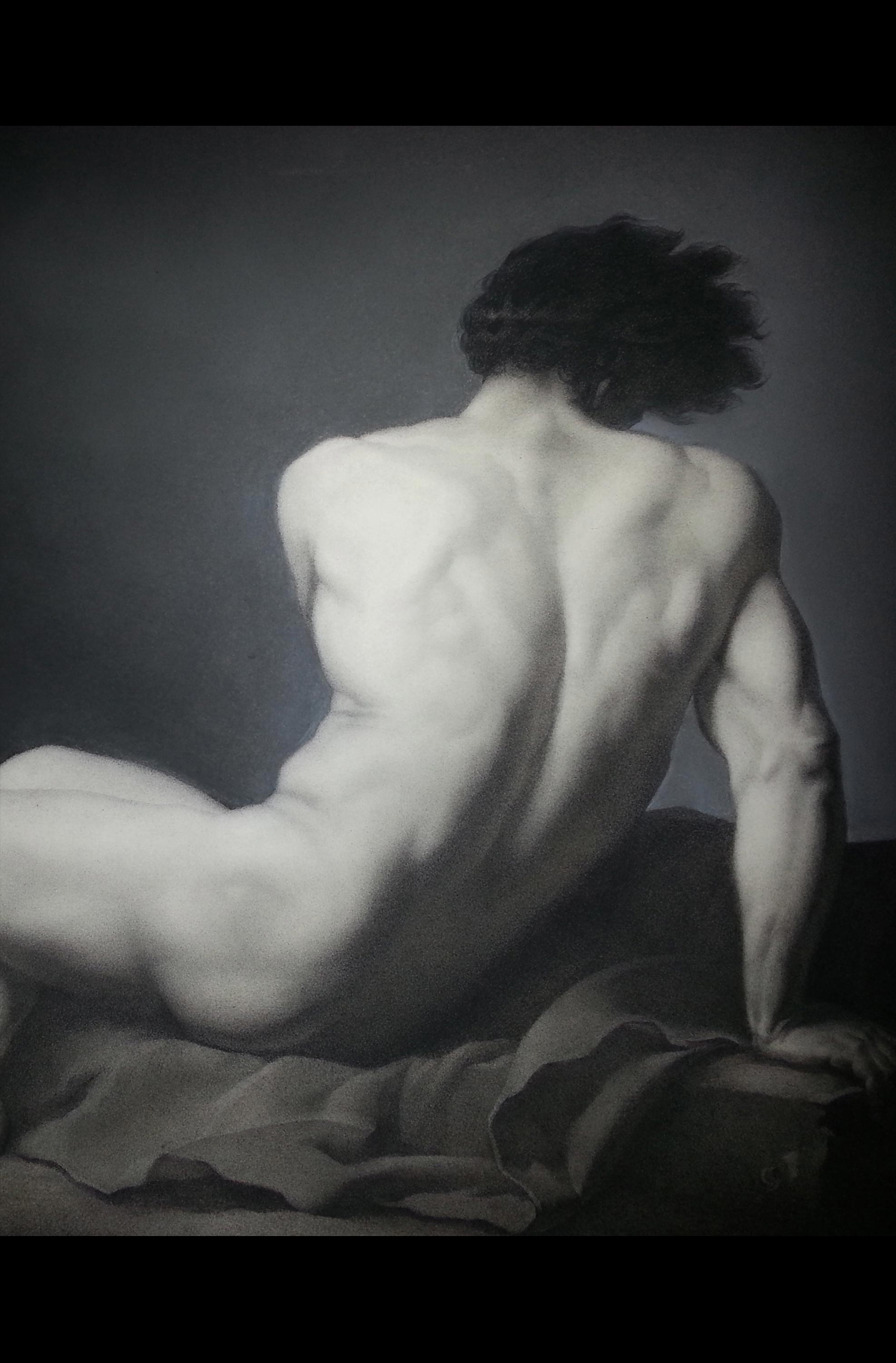
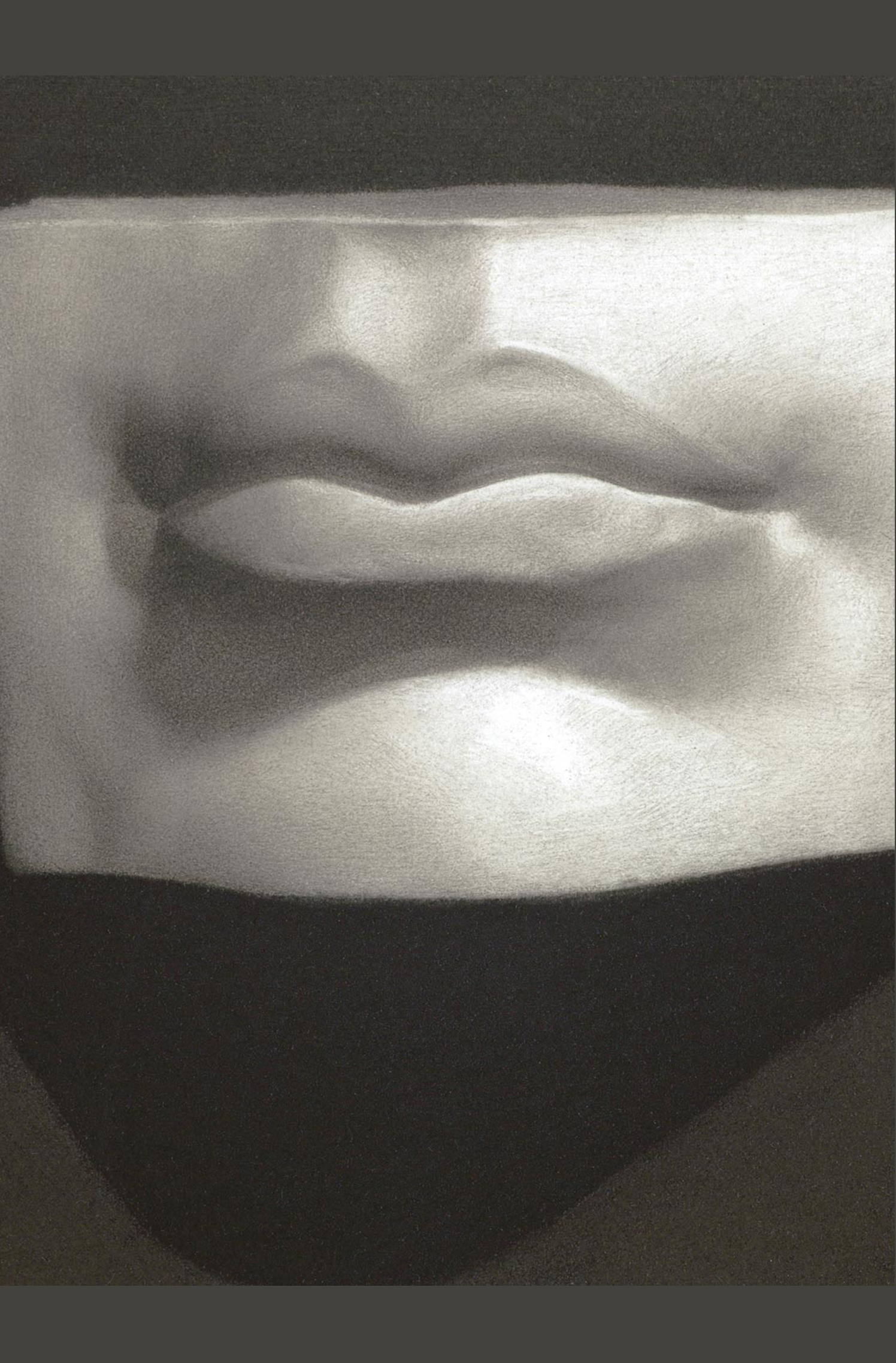

This is a Fortuny, Prud’Hon or Russian Mastercopy. The student is introduced to charcoal to draw the figure. Charcoal allows for a fuller range of values and demands greater control from the student. More subtlety of shade and form is required. This figure is drawn within the context of a spatial background.
This is the first drawing from a three-dimensional object. The cast is a simplified relief, such as lips, nose, eye or ear from Michaelangelo’s David. It is set against a flat, single-value background. This marks the introduction of the sight-size method, involving accurate measuring from a fixed stand-point. The drawing is done in charcoal.
The second cast is a Classical bust or skull. It is a three-dimensional form, rather than a relief. It is a larger drawing, and incorporates the subtleties of smaller, intricate forms, within the context of the larger form. The background includes a movement of light, which requires control of dark values over a large passage.
Charcoal and Chalk Cast (optional)
This cast is a more intricate form such as a hand or foot, which includes tendons, veins and pores. Chalk as well as charcoal is used for this drawing. Completion of this assignment demonstrates mastery of these different materials to capture exact tonal relationships.

